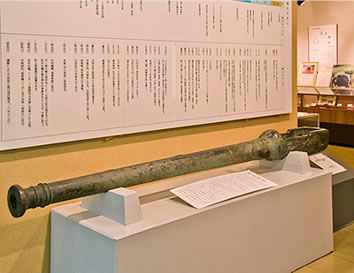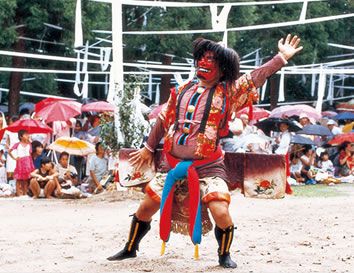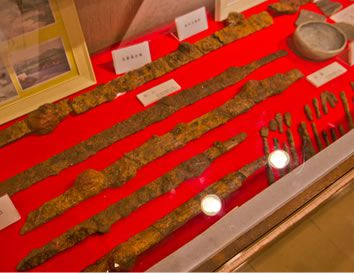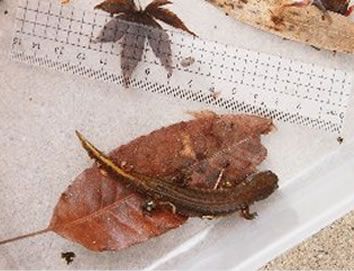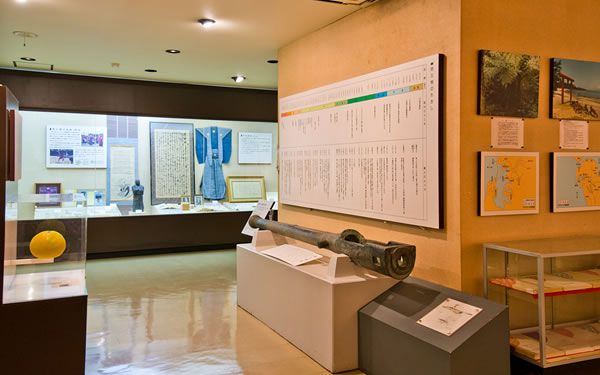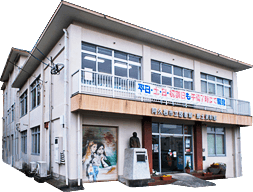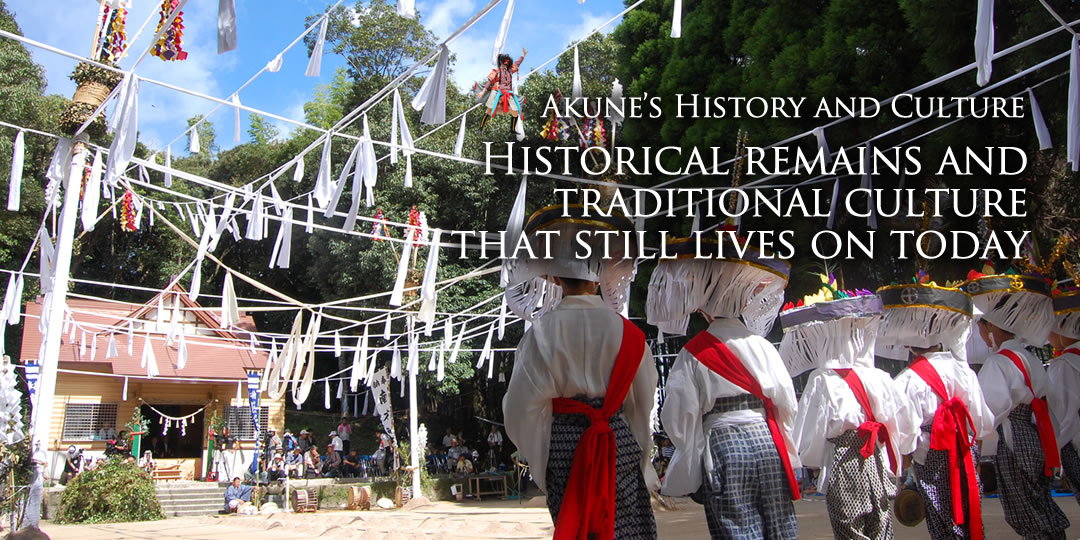
In the past, Akune was referred to as Akune-in during the Heian Period. The region got its name from the Akune
family that was appointed to rule the region. In the 16th century it came under the rule of the Shimazu clan and
prospered as a center of trade. As a result of this rich history, there are numerous historical ruins and
cultural artifacts that still exist today in Akune.
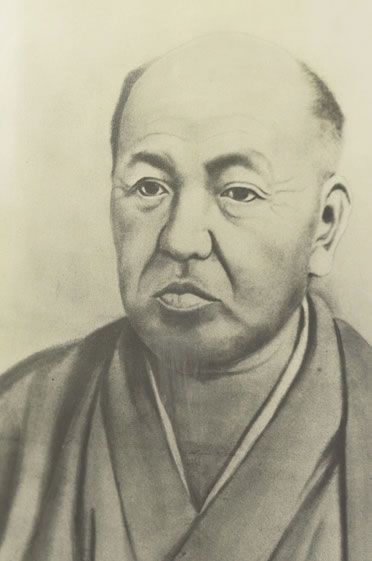 The 7th generation Kawaminami Genbe (Motonaka)
The 7th generation Kawaminami Genbe (Motonaka)
Typically referred to as "Masasuke Genbe." He died at the age of 73 in 1885. Among the many Genbes throughout the generations, Saijo is said to be the one who experienced the most extreme fluctuation between ruin and prosperity.

Akune was highly prosperous in the shipping industry, and the one who contributed the
most to this was Kawaminami Genbe.
Towards the end of the 16th century, the Satsuma Domain began utilizing their vassal state of Ryukyu as
a foothold to conduct trade with China. They made very large profits off of the sales of Chinese goods,
which were extremely valuable during that time period.
One of the most notable players in this trade market was "Rankaiei", a man who would later be known as
Kawaminami Genbe. Rankaiei was a high-ranking Chinese government official who was closely associated
with the Ming Dynasty, but as a result of turmoil in China as the Jurchens from Manchuria (later the
Qing Dynasty) invaded, he fled China to Ryukyu.
The Satsuma Domain saw that Rankaiei could communicate information about China, appraise Chinese goods,
and speak Chinese fluently, so they welcomed him warmly and employed him as an interpreter.
In this manner, Rankaiei was conferred the right to have a surname and wear a sword, so he chose the
surname "Kawaminami" as a reference to his home province of Henan in China. (The Japanese name
Kawaminami (河南) is written using the same characters as the Chinese word Henan (河南)) He also changed his
name to "Genbe." This is said to be how the first-generation "Kawaminami Genbe" came to be. The first
Genbe contributed a great deal of services to the Satsuma government, acting as an interpreter for
correspondence between Satsuma and Ryukyu.
After Genbe's death, his first son succeeded the Kawaminami family as a samurai family, and his second
son continued his father's work as a merchant for the shipping industry. His second son took the name
Genbe, and from then on the name Genbe was passed down through generations as the name for the head of a
family of shipping merchants.

Each generation of Genbe aided in expanding the sea shipping industry. Up through the 4th-generation Genbe
(Motohana), the Genbes were the trade lords of Ryukyu. From the 5th-generation Genbe (Motozane) and onward
they traded in brown sugar, and by the time of the 6th-generation Genbe (Mototsura) the Kawaminami family
was experiencing the height of its prosperity. In the prime of his life, the 7th-generation Genbe (Motonaka)
commanded a fleet of 6 or 7 "Genbe-fune" boats, which were 23 han in size (a han is an ancient Japanese
measurement; a 23-han boat would be a 300-ton class boat.) Of course he also needed a massive amount of
people to operate these boats; he employed 150 sailors to operate the boats, and it was common for there to
be nearly 100 smiths and boatbuilders repairing/improving his ships in the harbor—in total, the 7th
generation Genbe was responsible for a workforce of 250 people at any given time.
As a result of all this trade, Akune's port boomed. The port was so influential that in the year 1690 the
government office for Akune's castle region was relocated to Sakae. The 5th-generation Genbe (Motozane)
transcribed a map (original map source unknown) called the "Map of the Domain As Far As Ryukyu" which has a
sea trade route drawn on it. This sea route navigates through the many islands of Tanegashima to reach
Ryukyu, and beyond that it even has Taiwan recorded on it. From this map it has been learned how the Satsuma
Domain and the Genbes were connected to the rest of the world via the islands of Ryukyu.

For thousands of years, the "Kuronoseto" was widely known by the residents of Nara to be the most
beautiful view of the western sea.
"Amongst the 4,500 poems in the ancient "Manyoushuu" poetry anthology there are 2 poems relating to
Kagoshima, and one of those poems is about the Kuronoseto:
From the third volume of the Manyoushuu:
I saw the channel where the Hayato of Satsuma live for the first time today
From a distance it was like a faraway cloud. (written by Nagata-no-ookimi)
From the sixth volume of the Manyoushuu:
The Aji fish swim in the swift currents of the Seto where the Hayato live
They still do not compare to the currents of Yoshino's Miyataki (written by Otomo no Tabito)
In this way, many writers came to learn of the beauty of Akune's scenery through the Kuronoseto channel,
and left behind poems and other works about Akune.
In Akune City there are stone monuments from the Edo Period with the poems of the Confucian
philosopher/historian Rai San'yo on them, as well as monuments dedicated to the husband and wife pair
Tekkan Yosano and Akiko Yosano.
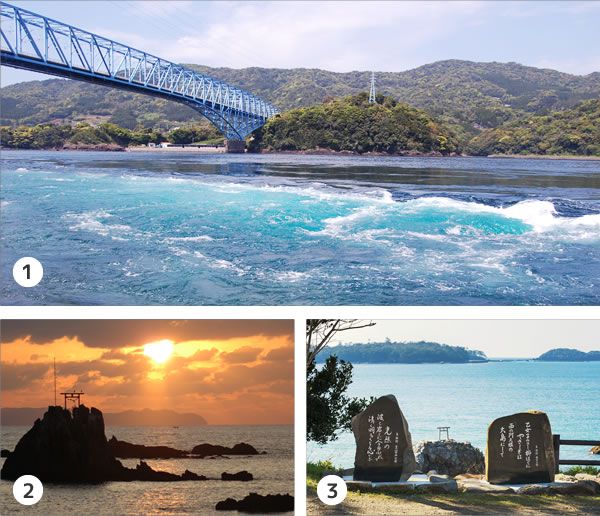 ① Kuronoseto ② The Ushi-no-Hama coastline beloved by Rai San'yo ③ Tobashira Park The monuments to the poems of Tekkan Yosano and Akiko Yosano
① Kuronoseto ② The Ushi-no-Hama coastline beloved by Rai San'yo ③ Tobashira Park The monuments to the poems of Tekkan Yosano and Akiko Yosano

-
Hamajinchou (Protected Species) | Registered in 1953
These flowers grow in lagoons with calm waves. They are evergreen tropical plants
that bloom purple flowers from November to April. Normally found growing south of Tanegashima, they
usually grow in warm coastal freshwater areas with light sea breezes. Plants as large as 3 meters
have been found on the south seas. These flowers also grow in Amakusa (Reihoku-cho) and the Goto
Islands, but only the only ones on the island of Kyushu designated as a protected species are the
ones in Akune.
-
The Akune Cannon (Archeological Item) | Registered in 1959
In 1957 a 10-year old boy was walking along Akune's beach and discovered this
16th-century cannon from Portugal. Guns like these would have been attached to ships, but for some
reason this cannon fell off into Akune's ocean. Today, it is a valuable historical artifact proving
Akune's overseas connections; it is exhibited in the Akune Local Museum.
-
The Kami-mai Dancing of Haru's Minakata Shrines (Intangible Cultural Asset) |
Registered in 1968
There is a festival held every 8 years at the Haru region's southern shrines (Suwa
Shrines), involving a specific style of dancing said to be similar to traditional Izumo-style Shinto
music and dancing. This dance has many different names, such as "Chihari", "Kan-oroshi", "Binme",
"Yunme", "Tsurunme", "Tanokanme", "Shogunme", and "Kijinme." The origins of these dances is unknown,
however it is known that the "Kijinme" dance was made during the Houreki Era (1751~1764) and because
of this it is thought that this style of dancing was already being performed at that time. In recent
years an effort has been made to preserve the dance, with interim dances being performed each year.
The latest true performance of the dance was on August 26th 2014 after a 17 year hiatus.
-
Wakimoto Tombs (Ruins) | Registered in 1975
In Wakimoto's Uehara region there are 2 box-shaped tombs that date back to the
"Tumulus period" (about the 6th century.) These tombs constitute the "Wakimoto Kofun Cluster", and
although the grave mounds cannot be confirmed an investigation was performed in 1944 that uncovered
artifacts such as an iron sword, an ornamental knife, and an arrowhead (these items on are on
display at the Akune Local Museum.) Based on the lettering these are also called the Itowari-fuchi
Tombs. Along with the nearby Nittagaoka Tombs, they are collectively referred to as the Wakimoto
Kofun Cluster. These sites contain a number of different structures such as horizontal stone
chambers and underground stone slab tombs, and they contain different varieties of graves all within
close proximity of each other. As a result, they are precious ruins that provide information about
the culture of Kagoshima during the Tumulus period.
-
Ushi-no-hama Coast (Scenic Location) | Registered in 04/2014
A beautiful spot overlooking the Koshikijima Islands far across the sea, notable
for its oddly shaped rocks and atolls that have been worn away by the rough waves of the East China
Sea. The Edo-era Confucian philosopher and historian Rai San'yo loved this place, so much that he
wrote a poem about it which is carved into a stone monument located in the Rai San'yo Park behind
Ushi-no-hama Station. The rocks visible on the coast are actually mélange sediment deposits composed
of numerous different types of sediments mixing together, which extend down into the ocean floor for
thousands of meters.
-
Clouded Salamanders (Protected Species) | Registered in 04/2014
Clouded salamanders live in hilly areas of open plains or in woodlands. The adults
commonly hide under fallen trees, leaves, under rocks, or in shallow soil. They are primarily active
at night, and their mating season is from late January to early April. During this mating season
they lay eggs in wetlands, rice field gutters, and shallows ponds/swamps. The species that lives in
Akune is considered important scientifically, with the local population's southern distribution
limit being of particular interest.

If you're interested in the culture and history of Akune, the "Akune Local Museum" is where you can learn
more.
Among their numerous exhibits they have numerous prefecturally-designated cultural properties such as
the Akune Cannon and a letter from Saigo Takamori addressed to a Kawaminami family member. They have
many exhibits which are well-worth seeing.








